Hair Fall Won’t Stop? The Right Way to Oil Your Hair
Isha Gogia | Jul 13, 2025, 17:13 IST
Hair loss doesn't have to be inevitable. Ancient oiling techniques backed by modern science reveal powerful methods to strengthen follicles and prevent thinning. From choosing the right oils to mastering application techniques, discover how proper scalp massage and strategic oil selection can transform your hair health. Your strongest hair growth starts with these proven methods.
Hair loss concerns affect countless individuals worldwide, creating anxiety and diminishing confidence. From genetics and hormonal changes to environmental stressors and nutritional deficiencies, numerous factors contribute to hair thinning and premature hair fall. While modern medicine offers various treatments, proper oil application emerges as a time-tested, accessible solution that combines ancient wisdom with contemporary understanding of hair biology. This natural approach addresses multiple hair loss causes simultaneously—nourishing follicles, improving scalp circulation, strengthening hair shafts, and creating protective barriers against daily damage.
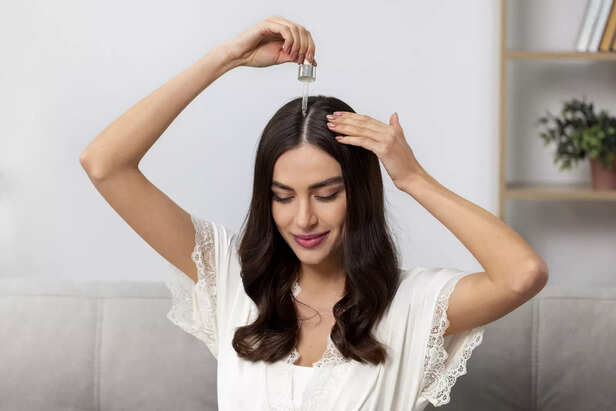
Hair follicles require adequate nourishment to maintain optimal function. Oil application delivers essential nutrients directly to hair roots while scalp massage enhances blood circulation. This increased blood flow brings vital oxygen and nutrients to follicles that may otherwise receive insufficient nourishment.
Scientific research demonstrates that specific oils can penetrate hair shafts, reducing protein loss and strengthening individual strands. This process involves measurable biochemical changes rather than superficial cosmetic effects.
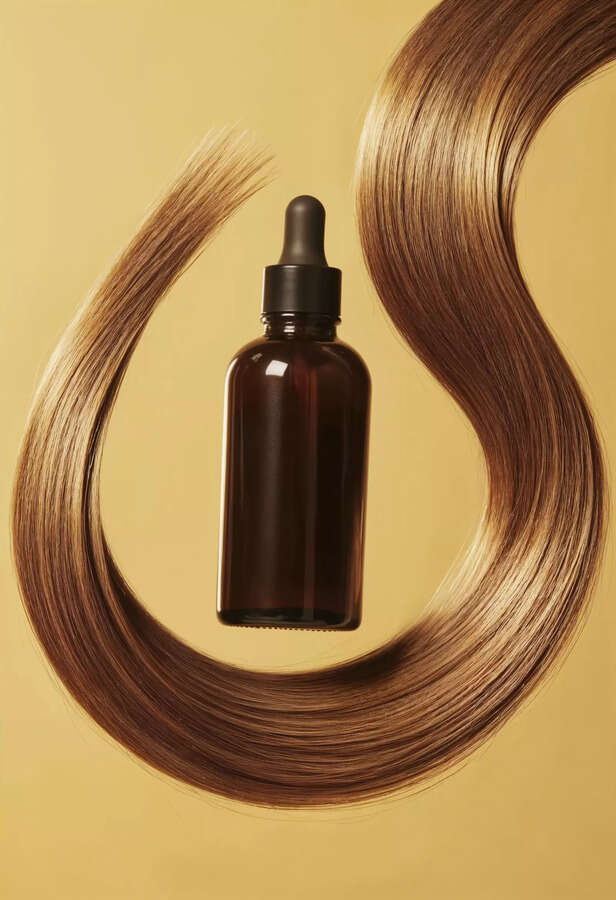
Different oils offer distinct benefits for hair loss prevention. Understanding these properties helps determine optimal choices:
Optimal Application Method
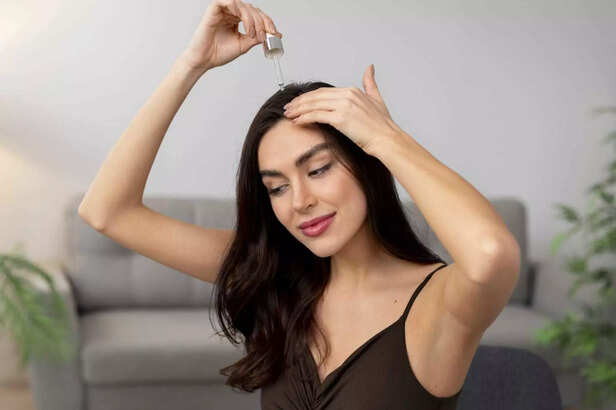
Proper technique determines treatment effectiveness. Most people apply excessive quantities or use incorrect methods. This systematic approach ensures maximum benefits:
Preparation Phase Begin with completely dry hair. Moisture dilutes oil effectiveness and reduces penetration. Schedule treatments when oil can remain undisturbed for minimum 30-minute periods, though overnight applications yield superior results.
Treatment Timing Guidelines
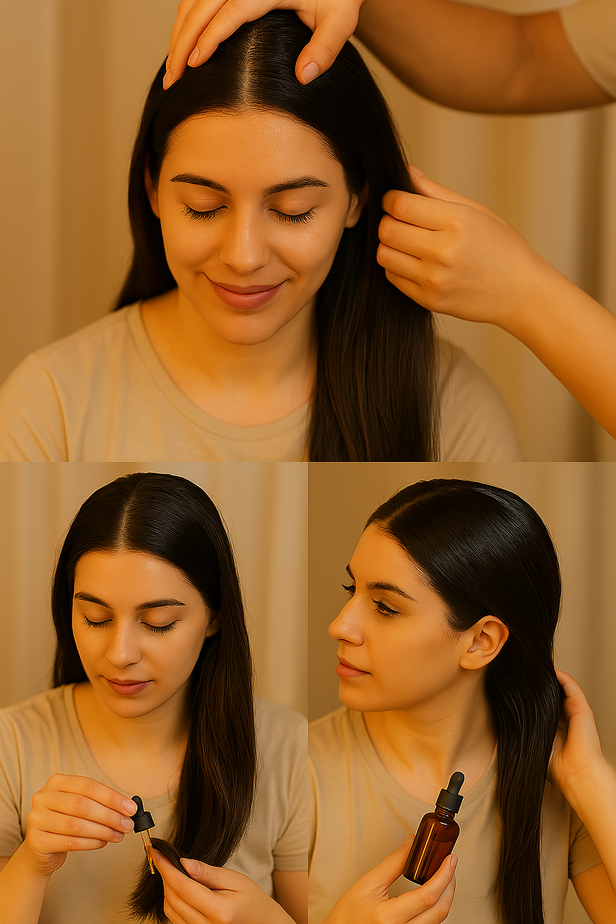
Performance-Limiting Errors
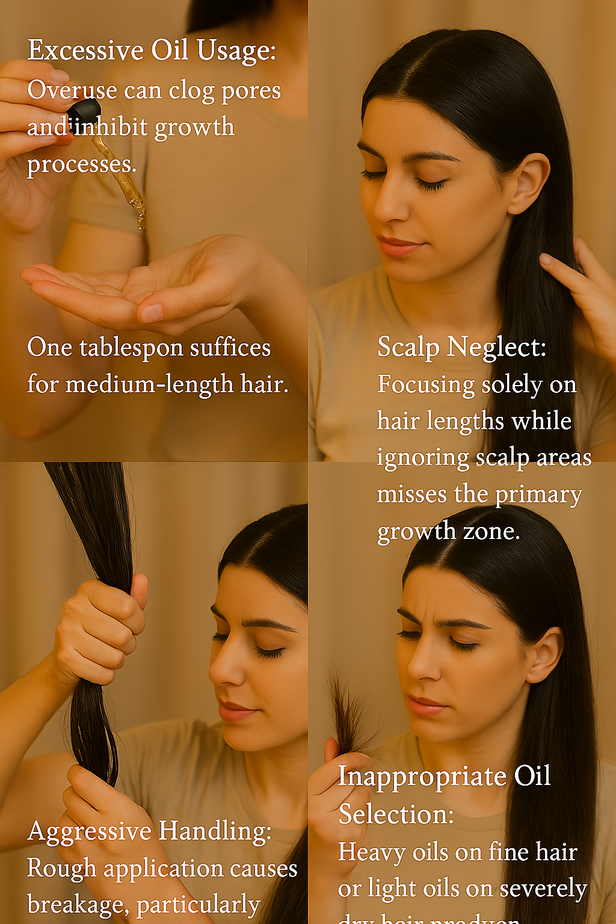
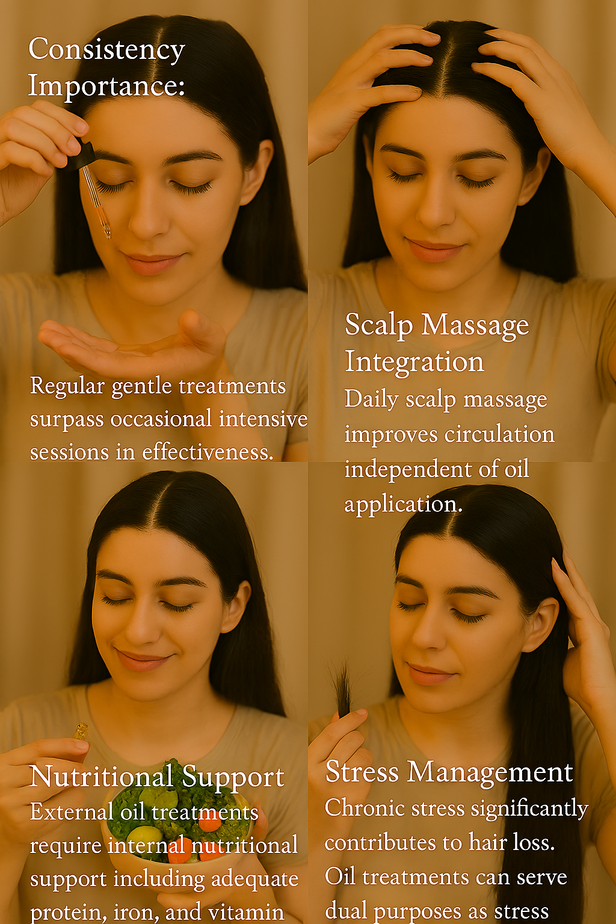
Effective Oil Removal
 Proper oil removal prevents buildup while maintaining hair health benefits. Many people struggle with this crucial step, leading to greasy residue or over-washing damage.
Proper oil removal prevents buildup while maintaining hair health benefits. Many people struggle with this crucial step, leading to greasy residue or over-washing damage.
Hair growth occurs gradually over 2-3 month periods before significant changes become visible. However, reduced hair fall often becomes noticeable within 2-4 weeks of consistent treatment.
Progress documentation through photography helps track gradual improvements that daily observation might miss.
Increased hair loss, scalp irritation, or skin breakouts following oil treatments require immediate discontinuation. These reactions may indicate allergic responses or excessive product use. Persistent problems warrant dermatological consultation.
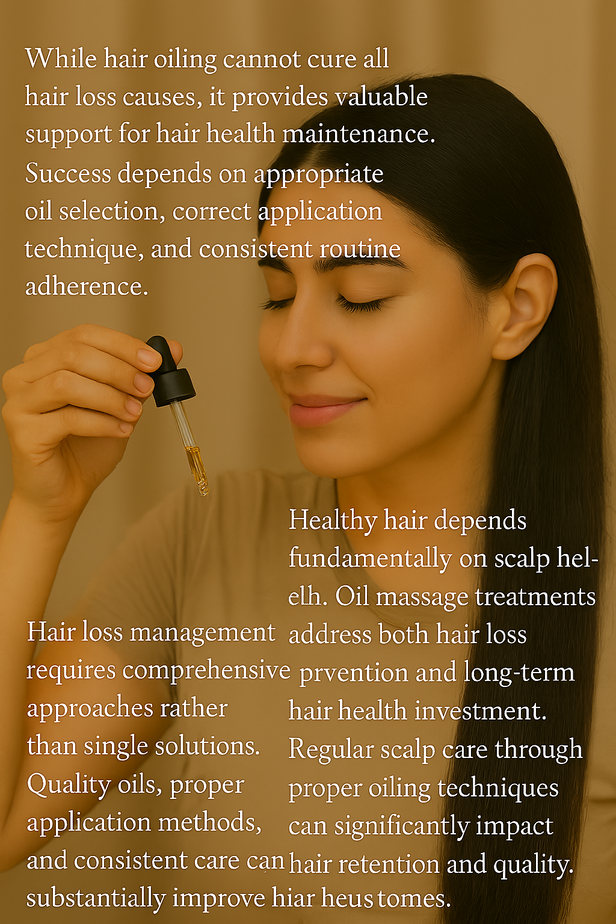
While hair oiling cannot cure all hair loss causes, it provides valuable support for hair health maintenance. Success depends on appropriate oil selection, correct application technique, and consistent routine adherence.
Healthy hair depends fundamentally on scalp health. Oil massage treatments address both hair loss prevention and long-term hair health investment. Regular scalp care through proper oiling techniques can significantly impact hair retention and quality.
Hair loss management requires comprehensive approaches rather than single solutions. Quality oils, proper application methods, and consistent care can substantially improve hair health outcomes. Immediate implementation of these practices ensures optimal results.
Explore the latest trends and tips in Health & Fitness, Travel, Life Hacks, Fashion & Beauty, and Relationships at Times Life!
Frequently Asked Questions(FAQs)
Understanding Hair Oiling Science

Hair Oiling
( Image credit : Freepik )
Hair follicles require adequate nourishment to maintain optimal function. Oil application delivers essential nutrients directly to hair roots while scalp massage enhances blood circulation. This increased blood flow brings vital oxygen and nutrients to follicles that may otherwise receive insufficient nourishment.
Scientific research demonstrates that specific oils can penetrate hair shafts, reducing protein loss and strengthening individual strands. This process involves measurable biochemical changes rather than superficial cosmetic effects.
Essential Oil Selection Guide

Hair Oil Guide
( Image credit : Freepik )
Different oils offer distinct benefits for hair loss prevention. Understanding these properties helps determine optimal choices:
- Coconut Oil Properties: Lauric acid content allows superior penetration compared to other oils. This creates protective barriers while delivering internal nourishment. Antimicrobial properties maintain scalp health and prevent bacterial complications.
- Rosemary Oil Benefits: Clinical studies indicate rosemary oil effectiveness comparable to minoxidil treatments for hair growth promotion. Small quantities mixed with carrier oils provide significant results.
- Castor Oil Advantages: Ricinoleic acid content improves circulation while reducing inflammation. This oil proves particularly beneficial for patchy hair loss or areas with noticeable thinning.
- Argan Oil Qualities :High vitamin E and fatty acid concentrations repair damaged hair while preventing breakage. This addresses a major contributor to apparent hair loss.
- Jojoba Oil Characteristics: This botanical wax closely resembles natural scalp sebum. It suits individuals with oily scalps who still require oil treatment benefits.
Optimal Application Method

Oiling Application Method
( Image credit : Freepik )
Proper technique determines treatment effectiveness. Most people apply excessive quantities or use incorrect methods. This systematic approach ensures maximum benefits:
Preparation Phase Begin with completely dry hair. Moisture dilutes oil effectiveness and reduces penetration. Schedule treatments when oil can remain undisturbed for minimum 30-minute periods, though overnight applications yield superior results.
- Temperature Consideration Gentle warming enhances oil penetration while creating relaxing experiences. Test temperature carefully—warmth should feel comfortable, never hot.
- Hair Sectioning Strategy Divide hair into manageable portions ensuring complete coverage. Four basic sections work effectively: left, right, front, and back areas.
- Scalp Treatment Technique Apply oil directly to scalp using fingertip pressure rather than fingernails. Work in circular motions from hairline toward crown area. Focus additional attention on regions showing thinning signs.Pressure application requires balance—sufficient firmness stimulates circulation without causing irritation. This process resembles therapeutic scalp treatment rather than casual hair care.
- Length Treatment Process After scalp coverage, distribute remaining oil through hair lengths, emphasizing end sections. These older hair portions require maximum protection from environmental damage.
- Protection Method Cover treated hair with shower caps or cotton materials. This creates humid conditions promoting deeper oil penetration. Overnight treatments benefit from silk or satin pillowcase protection.
Treatment Timing Guidelines

Treatment Techniques
( Image credit : Times Life Bureau )
- Weekly Intensive Sessions: Complete scalp and hair oil treatments once weekly. Allow 2-4 hours contact time or overnight application.
- Daily Maintenance: Apply small quantities of lightweight oils to damp hair ends preventing breakage accumulation.
- Pre-Wash Applications: Thirty-minute pre-shampoo oil treatments protect hair from harsh detergent effects while maintaining cleansing effectiveness.
Performance-Limiting Errors

Gloss Ritual
( Image credit : Times Life Bureau )
- Excessive Oil Usage: Overuse can clog pores and inhibit growth processes. One tablespoon suffices for medium-length hair.
- Scalp Neglect: Focusing solely on hair lengths while ignoring scalp areas misses the primary growth zone.
- Aggressive Handling: Rough application causes breakage, particularly when hair is wet and vulnerable.
- Inappropriate Oil Selection: Heavy oils on fine hair or light oils on severely dry hair produce suboptimal results. Match oil viscosity to hair characteristics.
Result Optimization Strategies

Gloss Bloom
( Image credit : Times Life Bureau )
- Consistency Importance: Regular gentle treatments surpass occasional intensive sessions in effectiveness.
- Scalp Massage Integration: Daily scalp massage improves circulation independent of oil application.
- Nutritional Support: External oil treatments require internal nutritional support including adequate protein, iron, and vitamin intake.
- Stress Management: Chronic stress significantly contributes to hair loss. Oil treatments can serve dual purposes as stress reduction activities.
Effective Oil Removal

Double Cleanse
( Image credit : Freepik )
- The Dry Shampoo Method: Begin with completely dry, oil-treated hair. Apply a small amount of shampoo directly to oily sections without adding water initially. Work the shampoo into the oil using gentle circular motions. This creates an emulsification effect, where shampoo molecules bind to oil molecules, making removal significantly easier.
- Water Integration Process: Gradually add small amounts of lukewarm water while continuing to massage. The combination creates a creamy lather that lifts oil from hair shaft and scalp surface. Avoid hot water, which can strip natural oils and cause excessive dryness.
- Double Cleansing Approach: Heavy oil treatments often require two shampoo applications. The first wash removes bulk oil content, while the second wash addresses remaining residue. Use gentle, sulfate-free shampoos to prevent harsh chemical stripping.
- Conditioning Balance: Always follow oil removal with appropriate conditioning. Focus conditioner on mid-lengths and ends rather than scalp areas. This replaces moisture lost during cleansing while maintaining scalp cleanliness.
- Frequency Considerations: Adjust washing frequency based on oil type and hair characteristics. Lightweight oils may require standard washing, while heavier treatments might need extended cleansing routines. Monitor hair response and modify accordingly.
Timeline Expectations
Progress documentation through photography helps track gradual improvements that daily observation might miss.
Warning Signs
Treatment Efficacy

Scalp Serenity
( Image credit : Times Life Bureau )
While hair oiling cannot cure all hair loss causes, it provides valuable support for hair health maintenance. Success depends on appropriate oil selection, correct application technique, and consistent routine adherence.
Healthy hair depends fundamentally on scalp health. Oil massage treatments address both hair loss prevention and long-term hair health investment. Regular scalp care through proper oiling techniques can significantly impact hair retention and quality.
Hair loss management requires comprehensive approaches rather than single solutions. Quality oils, proper application methods, and consistent care can substantially improve hair health outcomes. Immediate implementation of these practices ensures optimal results.
Explore the latest trends and tips in Health & Fitness, Travel, Life Hacks, Fashion & Beauty, and Relationships at Times Life!
Frequently Asked Questions(FAQs)
- Can hair oiling make my hair greasy if I have an oily scalp?Yes, but using lightweight oils like jojoba or applying less can help manage oiliness.
- Is it safe to leave hair oil on for more than overnight?t's generally not recommended, as prolonged exposure can sometimes lead to product buildup or clogged follicles
- Can hair oiling reverse baldness entirely?While it can significantly improve hair health and reduce thinning, it cannot reverse complete baldness.
- Are there any specific oils to avoid for hair oiling?Mineral oil and petroleum jelly are generally not recommended as they can clog pores and don't offer the same nutritional benefits as natural oils.
